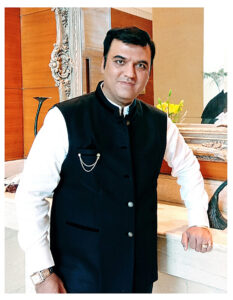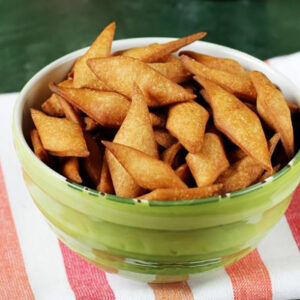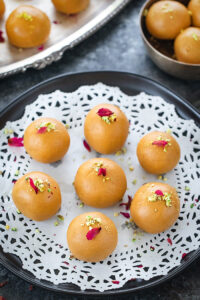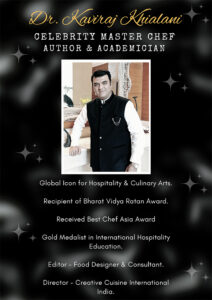
CELEBRITY MASTER CHEF DR KAVIRAJ KHIALANI
INTRODUCTION TO DIWALI FESTIVAL
Diwali, also known as Deepavali, is one of the most popular and widely celebrated festivals in India and among the Indian diaspora around the world. It is often referred to as the “Festival of Lights” due to the tradition of lighting lamps, candles, and fireworks during the celebration. Diwali holds significant cultural and religious importance and is observed by Hindus, Jains, Sikhs, and some Buddhists. The festival typically lasts for five days, and the exact dates vary each year based on the Hindu lunar calendar. It usually falls between October and November.
Here’s a brief introduction to the key aspects and traditions associated with Diwali
Spiritual Significance
Diwali has different meanings and stories across various regions of India, but one common theme is the victory of light over darkness and good over evil. For Hindus, it marks the return of Lord Rama to Ayodhya after his 14-year exile and victory over the demon king Ravana. For Sikhs, it commemorates the release of Guru Hargobind Ji from imprisonment. Jains celebrate the spiritual awakening of Lord Mahavira. In all cases, Diwali symbolizes the triumph of righteousness and the dispelling of ignorance.
Lighting of Lamps
The central ritual of Diwali is the lighting of oil lamps or diyas, candles, and decorative lights. This symbolizes the victory of light and knowledge over darkness and ignorance.
Decorations
Homes and public places are adorned with colorful rangoli (decorative art made with colored powders or rice flour), flower garlands, and colorful lanterns. People clean and decorate their houses to welcome the Goddess Lakshmi, who is associated with wealth and prosperity.
Fireworks
Fireworks and firecrackers are an integral part of Diwali celebrations. They are believed to ward off evil spirits and are a source of joy and excitement during the festival.
Sweets and Gifts
Exchanging sweets and gifts is a common practice during Diwali. Families and friends visit each other, exchange presents, and share traditional Indian sweets like ladoos, jalebis, and barfis.
Prayers and Worship
People visit temples and perform special prayers and rituals during Diwali. It is a time for spiritual reflection and seeking the blessings of deities.
New Beginnings
Diwali is considered an auspicious time for starting new ventures, making important purchases, and settling financial accounts. It’s also a time for family gatherings and reuniting with loved ones.
Cultural Diversity
While Diwali is predominantly a Hindu festival, it is celebrated by people of various religions and cultures in India. This inclusivity reflects the diverse nature of Indian society. Diwali is a time of joy, unity, and the celebration of life’s positive aspects. It is a wonderful opportunity to experience India’s rich culture and traditions and to celebrate the victory of light and goodness over darkness and negativity.
BRIEF HISTORY OF DIWALI
Diwali, also known as Deepavali, has a rich history with roots that extend deep into Indian culture and various religious traditions. While the specifics of the festival’s history can vary depending on the region and the religious beliefs associated with it, here’s a brief overview:
Ancient Origins
Diwali’s history can be traced back to ancient India, and its celebrations have evolved over thousands of years. The word “Diwali” is derived from the Sanskrit word “Deepavali,” which means a “row of lamps” or “festival of lights.”
Hindu Traditions
For Hindus, one of the most widely accepted stories associated with Diwali is the return of Lord Rama, an avatar of the god Vishnu, to his kingdom of Ayodhya after defeating the demon king Ravana. People lit lamps to guide Rama and his wife Sita back home, symbolizing the triumph of good over evil.
Jain Traditions
Diwali holds great significance in Jainism as it marks the nirvana, or liberation, of Lord Mahavira, the 24th Tirthankara. Jain communities celebrate this day by visiting temples, lighting lamps, and reflecting on the teachings of Lord Mahavira.
Sikh Traditions
For Sikhs, Diwali is associated with Guru Hargobind Ji, the sixth Guru of Sikhism. It commemorates his release from imprisonment in the Gwalior Fort and the release of 52 kings along with him. Sikhs celebrate Diwali as Bandi Chhor Divas, the day of liberation.
Buddhist Traditions
In some regions of India, especially in the Newar community of Nepal, Buddhists celebrate Diwali as a way to mark the victory of Emperor Ashoka’s conversion to Buddhism and the spread of the faith. This is more localized and not as widespread as the Hindu or Jain celebrations.
Cultural and Regional Variations
Diwali is celebrated with variations in traditions and stories across different regions of India. Each region may have its unique historical or mythological associations with the festival.
Over time, Diwali has grown to become one of the most widely celebrated and anticipated festivals in India and among the Indian diaspora worldwide. It has transcended religious boundaries to become a unifying cultural and social event, symbolizing the victory of light, knowledge, and good over darkness, ignorance, and evil. It is a time for family gatherings, feasting, joy, and the exchange of gifts, making it a festival that transcends its historical and religious origins to hold significance for people of all backgrounds.
WHY DO WE CELEBRATE IT WITH SO MUCH JOY EXCITEMENT?
Diwali is celebrated with immense joy and excitement for several reasons, each of which contributes to the festive atmosphere and widespread enthusiasm:
- Victory of Good over Evil: Diwali signifies the triumph of light over darkness and good over evil. The stories associated with the festival, such as Lord Rama’s return to Ayodhya after defeating Ravana, Guru Hargobind Ji’s release from imprisonment, and Lord Mahavira’s spiritual awakening, all emphasize the victory of righteousness and virtue. This theme of victory and positivity generates a sense of joy and hope.
- Spiritual Significance: Diwali is a time for spiritual reflection and seeking blessings from deities. People engage in prayer, visit temples, and perform rituals to express gratitude and seek divine guidance. The spiritual connection enhances the overall sense of joy and well-being.
- Family and Community Bonding: Diwali is a time for families to come together. Loved ones reunite to celebrate the festival, exchange gifts, and share meals. The sense of togetherness and the opportunity to strengthen familial bonds contribute to the festive spirit.
- Lighting of Lamps: The tradition of lighting lamps, candles, and decorative lights during Diwali is not only symbolic but also visually stunning. The glow of these lights adds to the festive ambiance, creating an atmosphere of warmth and happiness.
- Colorful Decorations: Homes are adorned with vibrant rangoli designs, flower garlands, and colorful lanterns. The visual beauty of these decorations adds to the excitement and aesthetic appeal of the festival.
- Sweets and Special Foods: Diwali is a time to indulge in a variety of delicious sweets and special dishes. Exchanging and savoring these treats adds a sensory delight to the celebration.
- Fireworks and Firecrackers: Fireworks and firecrackers are a source of joy and excitement. Their vibrant displays and loud bursts are not only visually appealing but also add an element of festivity to the occasion.
- New Beginnings: Diwali is considered an auspicious time to start new ventures, make important purchases, and settle financial accounts. The anticipation of new beginnings and positive changes in one’s life contributes to the overall enthusiasm.
- Cultural Diversity: Diwali is celebrated by people of various religions and cultures in India and around the world. This inclusivity and the opportunity to share in the festivities of others contribute to the overall excitement and unity.
- Generosity and Charity: Diwali also emphasizes acts of generosity and charity. Many people donate to the less fortunate, making it a time of giving and compassion, which adds to the sense of joy.
In summary, the celebration of Diwali is marked by a combination of spiritual, cultural, and social elements that promote joy, positivity, and unity. The festival’s emphasis on light, goodness, and the triumph of virtue over vice resonates with people of all backgrounds, making it a time of great excitement and happiness.
5 PLACES IN INDIA WHERE IT IS MOST IMPORATANT TO CELEBRATE
Diwali is celebrated with great enthusiasm throughout India, but there are certain places where the festival holds special significance and is celebrated in a particularly grand and unique manner. Here are five places in India where Diwali is especially important:
Varanasi, Uttar Pradesh
Varanasi, one of the oldest cities in the world and a major spiritual hub for Hindus, celebrates Diwali with immense fervor. The city’s ghats along the Ganges River come alive with thousands of earthen lamps and a grand display of fireworks. Pilgrims and tourists flock to Varanasi to witness the mesmerizing Ganga Aarti and the special Diwali celebrations in this sacred city.
Amritsar, Punjab
In the city of Amritsar, home to the Golden Temple, Diwali takes on a unique character. The Golden Temple is beautifully illuminated, and the celebrations include the lighting of lamps, Sikh kirtan (spiritual music), and Langar (community kitchen) where free meals are served to all, regardless of religion, caste, or creed.
Jaipur, Rajasthan
Jaipur, known as the “Pink City,” is famous for its grandeur during Diwali. The entire city is adorned with lights and decorations. The lighting of the historic Amer Fort and the bursting of firecrackers create a stunning visual spectacle. The markets are bustling with shoppers looking for traditional clothing and handicrafts.
Ayodhya, Uttar Pradesh
Ayodhya is believed to be the birthplace of Lord Rama, and Diwali is celebrated here with unmatched enthusiasm. The city’s residents light thousands of diyas, and the main ghat on the Sarayu River hosts a grand aarti ceremony. The entire city is beautifully decorated, and it’s a significant pilgrimage site during the festival.
Goa
In the coastal state of Goa, Diwali takes on a different flavor. The celebration here includes not only the traditional lighting of lamps but also a unique tradition called Narak Chaturdashi. People in Goa burst earthen pots filled with firecrackers and compete in making the loudest noise. The celebration is marked by traditional music, dance, and a festive atmosphere.
These are just a few examples, and Diwali is celebrated with great enthusiasm in many other cities and regions across India. Each place adds its own cultural and regional elements to the festival, making it a truly diverse and colorful celebration across the country.
WHAT DOES GODDESS LAKSHMI SIGNIFY IN DIWALI PUJA?
Goddess Lakshmi holds great significance in Diwali Puja, and Her presence is central to the festival. She is the goddess of wealth, prosperity, and good fortune.
In the context of Diwali, the worship of Goddess Lakshmi signifies several important aspects:
- Prosperity and Abundance: Diwali is often associated with the beginning of the Hindu financial year, and it’s considered an auspicious time to seek blessings for wealth and abundance. By worshiping Goddess Lakshmi, people express their desire for material and financial well-being in the coming year.
- Spiritual Wealth: While Goddess Lakshmi is primarily associated with material wealth, her worship also signifies the importance of spiritual wealth. This includes values such as compassion, kindness, and inner prosperity. The lighting of lamps and the inner illumination they represent can be seen as a symbol of spiritual wealth.
- Household Happiness: In many Indian households, it is believed that Goddess Lakshmi visits homes on the night of Diwali and blesses them with prosperity. As a result, people clean and decorate their homes to welcome her. The lighting of lamps and the offering of prayers seek to ensure the well-being and happiness of the family.
- Economic Activities: Diwali is an auspicious time for business and financial activities. Traders and merchants close their old account books and open new ones, seeking Goddess Lakshmi’s blessings for success and prosperity in the coming year.
- Symbol of Light: Goddess Lakshmi is often depicted sitting or standing on a lotus, and her image is bathed in a radiant, golden light. This symbolizes the importance of light in dispelling darkness and ignorance. The light of knowledge and wisdom is also a form of wealth and is associated with the goddess.
During Diwali Puja, people prepare for the arrival of Goddess Lakshmi by thoroughly cleaning their homes and creating rangoli designs at the entrance. They light oil lamps and candles to guide her way, and they offer prayers and devotional songs to seek her blessings. Special pujas and aartis are performed in her honor. Additionally, offerings of sweets, fruits, and coins are made as a gesture of devotion.
Overall, Goddess Lakshmi in Diwali Puja represents the desire for prosperity, both in terms of material wealth and spiritual richness. Her worship is a central aspect of the festival, and her blessings are sought for the well-being and happiness of individuals and their families.
Here are a few recipes to try out this festive season. Wishing all our readers a very happy & prosperous Diwali & a great year ahead!!!
SHANKAR PALI

Ingredients
2 cups all-purpose flour (Maida)
1/2 cup fine semolina (sooji)
1/4 cup ghee (clarified butter)
1/2 cup milk
1/2 cup powdered sugar
A pinch of salt
1/2 tsp cardamom powder
Method
- Mix flour, semolina, and a pinch of salt.
- Add melted ghee and blend until it resembles breadcrumbs.
- Gradually add milk to form smooth dough.
- Rest the dough, then knead it again.
- Roll out the dough, cut into diamond or square shapes.
- Fry in hot oil until golden brown.
- Sprinkle with powdered sugar and cardamom while warm.
- Cool and store in an airtight container.
MOTICHOOR LADDOO

Ingredients
1 cup besan (gram flour)
1/4 cup water
A pinch of orange food color (optional)
Oil or ghee for frying
1 1/2 cups sugar
1 cup water
1/2 tsp cardamom powder
A handful of chopped nuts (almonds, cashews, pistachios)
Method
- Make a batter with besan and water. Add food color if desired.
- Heat oil or ghee for frying.
- Pour the batter through a perforated ladle into hot oil, creating tiny boondi. Fry until golden and drain.
- Make sugar syrup with sugar, water, and cardamom. Cook until it reaches a one-thread
- Mix the boondi into the sugar syrup. Add chopped nuts.
- Shape the mixture into laddoos while it’s still warm.
MOHANTHAL

Ingredients
1 cup besan (gram flour)
1/2 cup ghee (clarified butter)
1/2 cup milk
1 cup sugar
A pinch of cardamom powder
Chopped nuts (almonds, pistachios) for garnish
Method
- Heat ghee in a pan, add besan, and roast on low heat until it turns aromatic and golden brown.
- Warm the milk separately.
- Slowly add warm milk to the roasted besan while stirring continuously to avoid lumps.
- Cook the mixture until it thickens and leaves the sides of the pan.
- Add sugar and cardamom powder, and stir until the sugar melts and the mixture thickens.
- Pour the mixture into a greased tray, garnish with chopped nuts, and press it down gently.
- Let it cool and set before cutting it into pieces.
KESARI PEDA

Ingredients
1 cup milk powder
1/2 cup condensed milk
1/4 cup ghee (clarified butter)
A pinch of saffron strands soaked in 1 tablespoon warm milk
1/2 teaspoon cardamom powder
Chopped nuts (pistachios, almonds) for garnish
Method
- In a non-stick pan, heat ghee and add milk powder. Roast on low heat until it turns light golden.
- Add condensed milk, saffron-infused milk, and cardamom powder. Stir continuously until the mixture thickens and leaves the sides of the pan.
- Remove from heat and let it cool slightly.
- Grease your hands and shape the mixture into small pedha (round or flattened) shapes.
- Garnish with chopped nuts.
BESAN LADDOO

Ingredients
1 cup besan (gram flour)
1/2 cup ghee (clarified butter)
1/2 cup powdered sugar
A pinch of cardamom powder
Chopped nuts (almonds, cashews) for garnish
Method
- Heat ghee in a pan, add besan, and roast on low heat until it turns golden brown and aromatic.
- Remove from heat and let it cool slightly.
- Add powdered sugar and cardamom powder. Mix well.
- Shape the mixture into small laddoos while it’s still warm.
- Garnish with chopped nuts.
SEV BURFI

Ingredient
2 cups fine sev (gram flour vermicelli)
1/2 cup ghee (clarified butter)
1 cup condensed milk
A pinch of cardamom powder
Chopped nuts (almonds, cashews) for garnish
Method
- Heat ghee in a pan, add fine sev, and roast on low heat until it turns light golden.
- Add condensed milk and cardamom powder. Stir until the mixture thickens and leaves the sides of the pan.
- Remove from heat and let it cool slightly.
- Grease a tray, pour the mixture into it, and flatten it with a spatula.
- Garnish with chopped nuts.
- Let it cool and set before cutting it into burfi squares.
CONCLUSION
In conclusion, Indian festivals like Diwali bring people together to celebrate with joy, unity, and a deep sense of tradition. Diwali, with its vibrant lights, rich cultural significance, and delicious sweets, is a time for families and communities to come together, exchange gifts, and seek blessings. It represents the victory of light over darkness, good over evil, and the pursuit of both material and spiritual wealth. As we explore the various sweets and snacks associated with Diwali, we can appreciate the diversity of Indian cuisine and the role of these delightful treats in enhancing the festive spirit. Whether it’s Shankar Pali, Motichoor Laddoo, or Kesari Pedha, these recipes reflect the cultural richness and the sweet traditions of India, and they are a testament to the joy and togetherness that define this special festival.
Celebrity Master Chef Dr Kaviraj Khialani is a Mumbai-based hotel-restaurant and food consultant. He is specialised in over 33 international cuisines and has quality experience with hotels and airlines as a part of his long journey of over two decades in his chosen field. Chef Kaviraj is a renowned author, academician, food designer, writer and has also been awarded several national awards and global recognitions for his talent & outstanding achievements. Besides having been featured on several food shows on ColorsTV and Star Plus he is a mentor, coach and guide to aspiring to be future chefs and hoteliers of tomorrow.
He can be contacted at twitter: @kaviraj_chef, Mobile: 91 9820939336. Mail: chefkaviraj249@gmail.com
Also Read:
Also Read:
Summer Break: The Dubai Diaries – a perfect melange of food, culture, tourism & hospitality!










